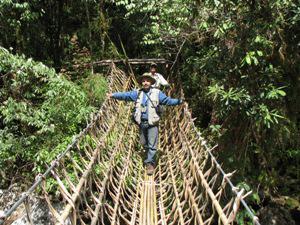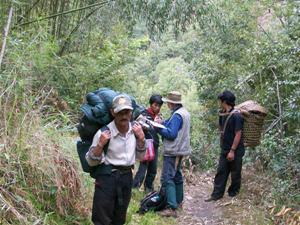Dilip Chetry
Other projects
12 Jul 2007
Current Status and Conservation of Primates in Dibang Wildlife Sanctuary in the State of Arunachal Pradesh, India
The project aims to study the diversity and status of primate species in the park. Identification of threats and sharing of information with scientific community and policy makers are the other aims.

The state of Arunachal Pradesh is an integral part of Eastern Himalaya bio-diversity hotspot and thereby supports rich floral and faunal diversity. As many as 9 species of primate represent the primate community in the state. It is the only Indian state to have both Western and Eastern Hoolock gibbon. Dihang-Dibang biosphere reserve with 5111.50sq.km area is one of the richest pockets of bio-diversity in Arunachal Pradesh. Two recent studies sponsored by Rufford report on primate diversity and as well as threats to primate community in Dibang Wildlife Sanctuary which forms the eastern part of the Dihang-Dibang biosphere reserve. However, a scientific report on status of primate community from Mouling National Park which forms the western part of the biosphere reserve is still waiting. Hence, in current scenario when habitat loss , habitat fragmentation and hunting have been identified as major threats to primates in entire Northeast India, an ardent need for exploration of primate diversity of Mouling National Park has been felt.

In this background this project will unearth the diversity and status of primate in the park . This will help in drawing a comprehensive picture about primate community of the entire biosphere reserve. Moreover, the baseline data on status and diversity of the primate community of the park will open new vistas for conservation wildlife in general and primate in particular. The study will act as guiding tool in bringing and implementing the conservation processes in the park and the bio-sphere reserve.
Moreover, the study will generate awareness among the local community to certain extent and this will help in initiating community participatory programs in future course. Above all the final draft of the project report will remain as blueprint for field biologists, researchers, conservationists, activists and forest department personals in years to come. In a nutshell the project will definitely have long-term impact on the conservation of primate and their habitats in Mouling National Park and its neighbouring areas.